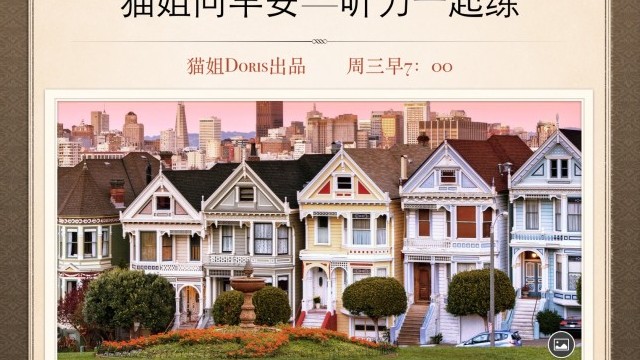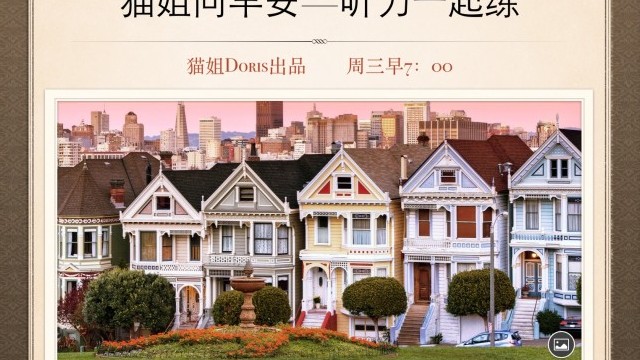看日本人如何看待日本:一個奇怪的國家
作者:滬江英語
2011-08-16 10:00
Japan is a small country located in east Asia. The population is around 130,000,000? people. The total world population is 6,800,000,000 , which means that roughly 2 in every 100 people are Japanese. Japan's land area measures 378,000? square kilometers. If the earth's land area is 149,000,000 square kilometers and the total area is 510,000,000? square kilometers, then Japan is no bigger than this red dot.
日本是個東亞的小國家,人口1.3億,而世界人口68億.也就是說……每100個人有兩個是日本人.日本國土面積378000平方千米,如果地球陸地面積是1.4億,地球表面積是5.1億,那日本比這個紅點大不了多少
Japan is the most advanced country in Asia. It is second only to America in GDP and it's proud of its high standard of living and economic wealth. Life expectancy of Japanese men is 79 years and 86 years? for women, which is the longest in the world. And there are culture practices such as KABUKI, BONSAI, SUMO, SADOU, KIMONO and ORIGAMI, all of which have developed into distinctly Japanese traditions.
日本是東亞最發(fā)達的國家,GDP僅次于美國。生活質量很高,經濟發(fā)達。人均壽命男的79,女的86,世界最高。文化方面則有歌舞伎、盆栽、相撲、茶道、和服和折紙,都源于日本獨特的文化傳統(tǒng)。
And we must not forget, Japan was the first country in the world to experience the destructive power of not one, but two atomic bombs dropped on Hiroshima and Nagasaki in World War II. More than 220,000 (two hundred and twenty thousand) people lost their lives and as a result, Japan abandoned its war time constitution.In these ways Japan is a country with its own original culture and history, but nowadays there are also many strange things about modern day Japan. Let's take a look at these strange things in eight different category.
當然我們不會忘記,日本是世界上第一個嘗到原子彈厲害的國家,不只一顆,而是兩個:二戰(zhàn)期間的廣島和長崎。220000人喪生,此后日本也廢棄了戰(zhàn)時憲法??傊?,日本這個國家有獨特的文化和歷史,不過現代的日本有些奇怪的地方,讓我們一起來從八個方面看看奇怪的日本。
1. Character.
國民性
Japanese people tend to be short, have black hair, small mouth and small eyes. This is a typical Japanese salaryman and over here is a Japanese schoolgirl. These days Japanese girls have a variety of ways to make their eyes appear bigger. There's even a function to make your eyes so big when you have a photo taken. Japanese technology sure is amazing. Another obsession Japanese girls have is with brands. Not more than anything else, they're obsessed with diets. Japanese women walk about town, carrying their high-quality brand bags. (Above??) for them, it's the ultimate status symbol. Japanese people also have the worst eyesight of anyone in the world with 40% (forty percent) of people using glasses or contact lenses. Japanese people are, generally, pretty shy. You could say that they find it particularly difficult to express how they really feel. Thanks to this, Japanese company meetings tend to drag on, and even after work is over, a Japanese person can't refuse an invitation for drinks. They also need to be careful of (what's the??) relationships between their boss and co-workers. Don't forget to bow on your way home, again, and again, and again. "So, when do I get my vacation?"
日本人一般……比較矮,黑頭發(fā),小嘴巴,和小眼睛,這就是典型日本工薪族。這邊這個是日本女學生。日本女生有各種辦法讓眼睛看起來大一點,在照相的時候她們甚至可以通過某種方法讓眼睛更大一點。日本科技,確實神奇。日本女生的另一執(zhí)念是……名牌,當然還有……減肥。日本女人逛街,提著名牌包包,對她們來說,這是身份的終極象征。日本人視力全球最爛,40%的人帶眼睛,或隱形眼鏡。日本人一般來說……比較含蓄,可以說,他們很難說出自己真實感受,因此,日本公司的會議一般沒完沒了。就算下班,也不好意思拒絕應酬。同時還要注意上下級或同級之間關系,下班的時候別忘了鞠躬一鞠躬,二鞠躬,三鞠躬……(那么,什么時候可以批我的假期?)
2. Tokyo
東京
Tokyo, Japan's capital city, makes up an extremely small area, but it's the heart of Japanese politics, economy, distribution and fashion. A true megalopolis. Tokyo is the Mekka, the place everyone wants to live. And so in recent years, it's become overpopulated to the extreme. An example, compare to an American, who can claim a living space of 180 (one hundred and eighty) square kilometers to himself, there are 11 (eleven) Japanese people cramming to the same space, but in Tokyo alone, there are 192 (one hundred and ninty-two) people squished into the same extremely crammed living conditions. At the famous SHIBUYA scramble crossing, about every green light (drain??) peak hours, around 3,000 (three thousand) people will cross at the same time. At a Tokyo's McDonald's, it's perfectly normal to have just 50 centimeters of bench space per customer. (Ain't that??) like being a chicken in the coop, isn't it?
東京,日本的首都,面積極小,卻是日本的政治、經濟、物流、時尚中心,真正的超大城市。東京也是所有人都想去的地方,所以近幾年來極端擁擠。比如說,一個美國人可以獨占180平方米的地盤,同樣大的地方,在日本要11個人擠,而在東京,這塊地方要塞192個人。在澀谷的scramble路口,高峰時間,每次綠燈都有3000人通過。在東京的麥當勞,平均每人50厘米寬的吧臺座位是很正常的,像養(yǎng)雞場一樣,對吧?
3. Food
餐飲
From traditional Japanese style food, to Chinese, Italian, French and American style junk food, Japan is a nation of food lovers. However, the amount of food actually produced in Japan is only around 40%. It's incredible to think that a nation so obsessed with food lets 23,200,000 (twenty-three point two million) tons of it go to waste every single year. That's actually more than four times the 5,900,000 (five point nine million) tons of food that gets sent yearly by eight programs to assist starving nations. Right now, there are 1,000,000,000 (one billion) people in the world suffering from starvation. That's equal to one in every seven people. And someone in the world dies from starvation every four seconds. Of those who die, more than half are children under five. But despite that, Japanese people will eat as much as they like and simply throw away the rest. So, Japanese cuisine, really is a big deal.
從傳統(tǒng)日式料理,到中華料理,意式料理,法國大餐,美國垃圾食品,日本是美食家的國度,不過只有40%的食物產自日本。很難想象,一個對事物如此執(zhí)著的國家,每年會倒掉2320萬噸的食物,是每年日本援助饑荒國家的590萬噸的4倍。目前世界上有10億饑餓人口,就是說每七個人就有一個,平均4秒就有一人死于饑餓,其中一半是五歲以下兒童。不過,日本人還是想吃多少吃多少,吃不了的,就扔了吧。日本料理是一個很重要問題??!
4. Technology
科技
Japanis a technologically advanced nation with bullet trains that reach a speed of 300 (three hundred) kilometers an hour. And mobile friends that can act as a credit card and television all-in-one. Robots that walk like humans? Now truly. There are even restaurants that employ robots to make your RAMEN for you. The toilets in Japan now (lift technological marvels?). The seat warms your bottom. The lid automatically opens and shuts. And if you like, your toilet will even wash your ... and hhh. But for some reasons, old-style Japanese squat toilets still remain popular. Can't imagine why.
日本科技很發(fā)達,新干線時速可達300公里,。還有可以刷卡看電視的手機。像人類一樣走路的機器人?沒問題,甚至還有做拉面的機器人。廁所也是高科技:可以加熱的馬桶圈,自動開合的馬桶蓋,如果你喜歡,馬桶還可以自動清洗你的……嗯。但不知為什么,老式蹲坑還是最流行,想不通。
5. Water
水
In Japan, if you turn on the tap, the water that comes out of it is perfectly safe to drink as is.? Being an island country, Japan has water in abundance, but despite this, Japan imports huge amounts of mineral water from Europe, like about 580,000 (five hundred and eighty thousand) kilo liters every year. That amount equates to more than 1,160,000,000 (one point one six billion) 500 (five hundred) milliliter PET bottles. By the way, more than 1,100,000,000 (one point one billion) people in the world, or about eight times the population of Japan, don't have access to clean drinking water. A large portion of those who have to drink dirty water suffer from diarrhea and other diseases.
在日本,水龍頭里的水接出來就可以直接喝。作為一個島國,日本水資源很豐富,但日本會從歐洲進口大量礦泉水,每年約58萬千升相當于11.6億瓶500毫升的礦泉水。順便說一句,全球11億人口喝不到干凈的飲用水,是日本人口的8倍,很多人因此患上痢疾或其他疾病。
6. SUSHI
壽司
When you think Japan, you think SUSHI. There's a traditional style counter SUSHI restaurants, but now SUSHI train restaurants are also popular. You can choose from shrimp, salmon roe, egg and any number or types of SUSHI. Recently, you can even order pudding or Korean BBQs. We don't really know why. By the way, the king of SUSHI in Japan is TUNA. That almost 2 million tons of it fished worldwide every year, Japanese people eat 710,000 (seven hundred and ten thousand) tons. That's a third of the world's total. Or Japan consumes 80% of the world's supply of bluefin tuna. In the past thirty years, the total population of tuna has decreased by a third. Because of that, the bluefin tuna could soon be designated a threatened species, just like the giant panda, blue whale, tiger and African elephant. Now, for the amount of disposable wooden chopsticks that you use to eat that SUSHI with, Japanese people use 23,000,000,000 (twenty-three billion) pairs of chopsticks per year and every person will throw a two-hundred pairs each. And these days, 90% of those chopsticks are sourced from China. Did you have any idea that Japan was using Chinese natural forest resources to make its disposable wooden chopsticks?
說到日本,自然想到壽司。最初是這種傳統(tǒng)柜臺,現在回轉壽司店也很流行。你可以吃到蝦壽司,三文魚子壽司,玉子壽司,和其他各種。近幾年還可以點布丁和韓式燒烤。額……我不知道為什么。日本的壽司之王是金槍魚(吞拿魚)壽司,每年全球捕撈191萬噸金槍魚,日本人吃掉71萬噸,占三分之一。日本每年消費掉全球藍鰭金槍魚供應量的80%,所以過去三十年來,藍鰭金槍魚數量銳減至三分之一,很快就可以列入瀕危物種,就像大熊貓,藍鯨,老虎,和非洲象一樣。至于每年吃壽司用去的一次性筷子,日本人每年要用掉230億雙,平均每人200雙,這些筷子90%是從中國來的,所以日本一直在用中國的森林資源做一次性筷子,大家明白了吧?
7. Love
性愛
Have you seen those amazing buildings that look like fairytale castles? Well, you're in Japan. Of course, they are love hotels. There're around 30,000 (thirty thousand) love hotels in Japan and in a single day, 1,850,000 (one point eight five million) couples will visit one. That's quite a lot, but consider this, while every Japanese couple has sex of a grand total of 48 times a year, the global average number of times a couple has sex in one year is 103. And then there are those sex-loving Greeks who (for a??) cate on average 138 times a year. That's more than once every three days. Incredible! Oh, for the record, this is an actual Japanese castle. Please, don't mistake it for a love hotel and try to have sex in it.
你看到那些像童話城堡一樣的壯觀建筑了么?別忘了你在日本,那些當然是……愛情旅館。日本有約3萬家愛情旅館。每天有185萬對情侶光臨,看起來很多吧?不過:日本夫妻平均每年做愛48次,而世界平均水平是103次。當然還有熱愛做愛的希臘人,每年138次。每三天一次!難以置信。順便說一句,這是真正的日本天守閣。請不要錯認成愛情旅館,在此ooxx
8. Suicide
自殺
For a country with such a strong economy and the luxury of throwing away unwanted food, you'd think Japan would be a happier country, but it also boasts one of the highest rates of suicide in any developed nation. Even Mount FUJI, a revered symbol of Japan, is a notorious suicide spot for the around 100 dead bodies discovered in the surrounding woodiness every year. It's so not important, but every year, around 35,000 (thirty-five thousand) people in total kill themselves in Japan. That's 90 people every day. Every 16 minutes in Japan, one person takes their own life. I guess a healthy economy does not necessarily make a happy country, does it?
經濟發(fā)達,還可以奢侈的扔掉吃不了的東西,按說日本應該是個幸福又性福的國家。不過全球發(fā)達國家中,日本的自殺率最高。富士山,日本的象征,也是最熱門的自殺地之一。每年在周邊樹林中都會發(fā)現100多具尸體。雖然很少報道,但是每年都有35000人自殺,平均每天90人,每16分鐘,就有一人自殺。也許,經濟發(fā)達并不一定會幸福吧
So, this is Japan. When you look at it from a global perspective, do you see what I mean when I say Japan is a strange country? Does Japan seem a bit different from what you first imagined? After all, Japan projects an image of wealth and prosperity. There's probably a lot you can't see behind that image. But take a step back and you can see the bigger, strangier picture. And who created this strange country? You did.
總之,這就是日本。明白為什么說日本奇怪了么?是否和你的預想不太一樣呢?日本的形象一直是富裕和繁榮。而表象之下,卻有不一樣的東西。退一步,也許你會看到一個更完整,更奇怪的日本。當然,誰組成了這個奇怪的國家?日本人咯。
- 相關熱點:
- 面試技巧











